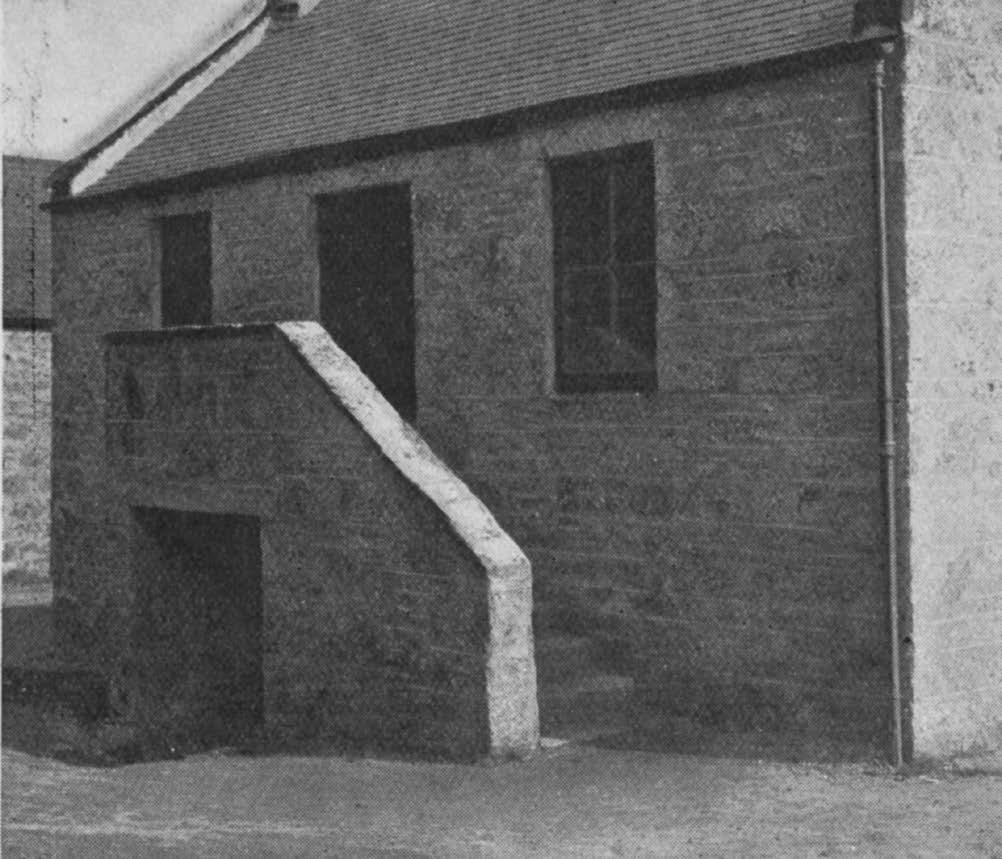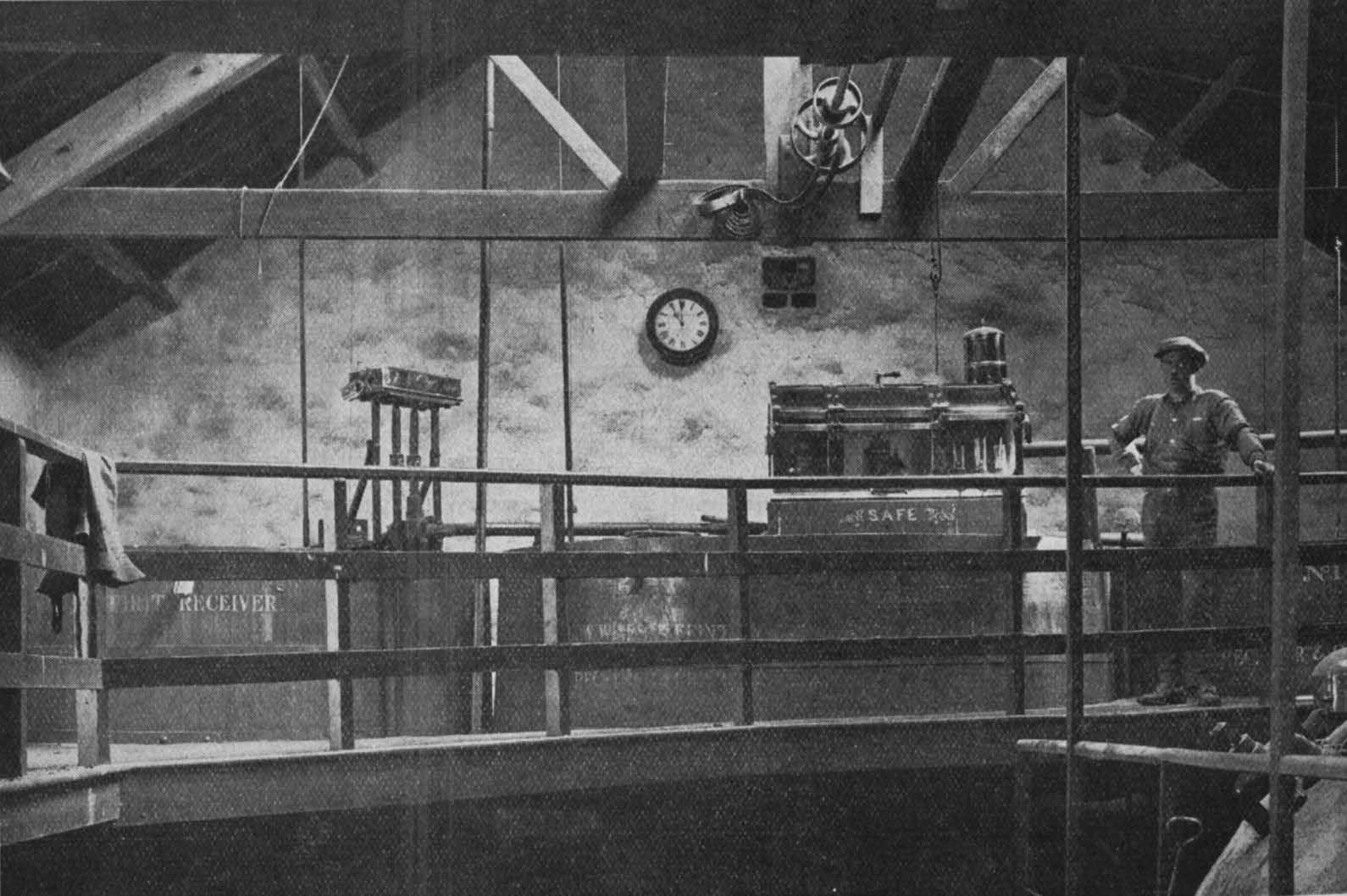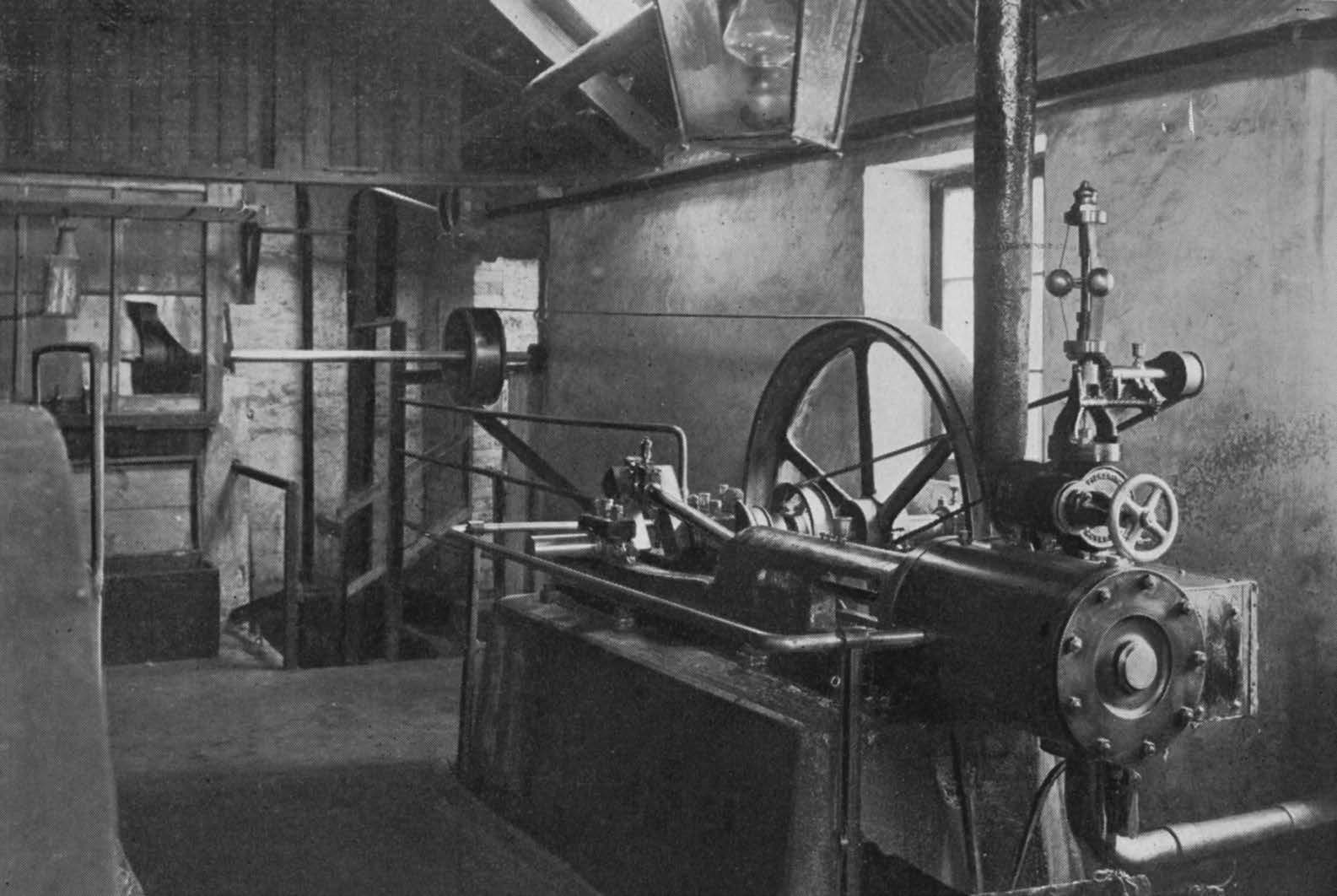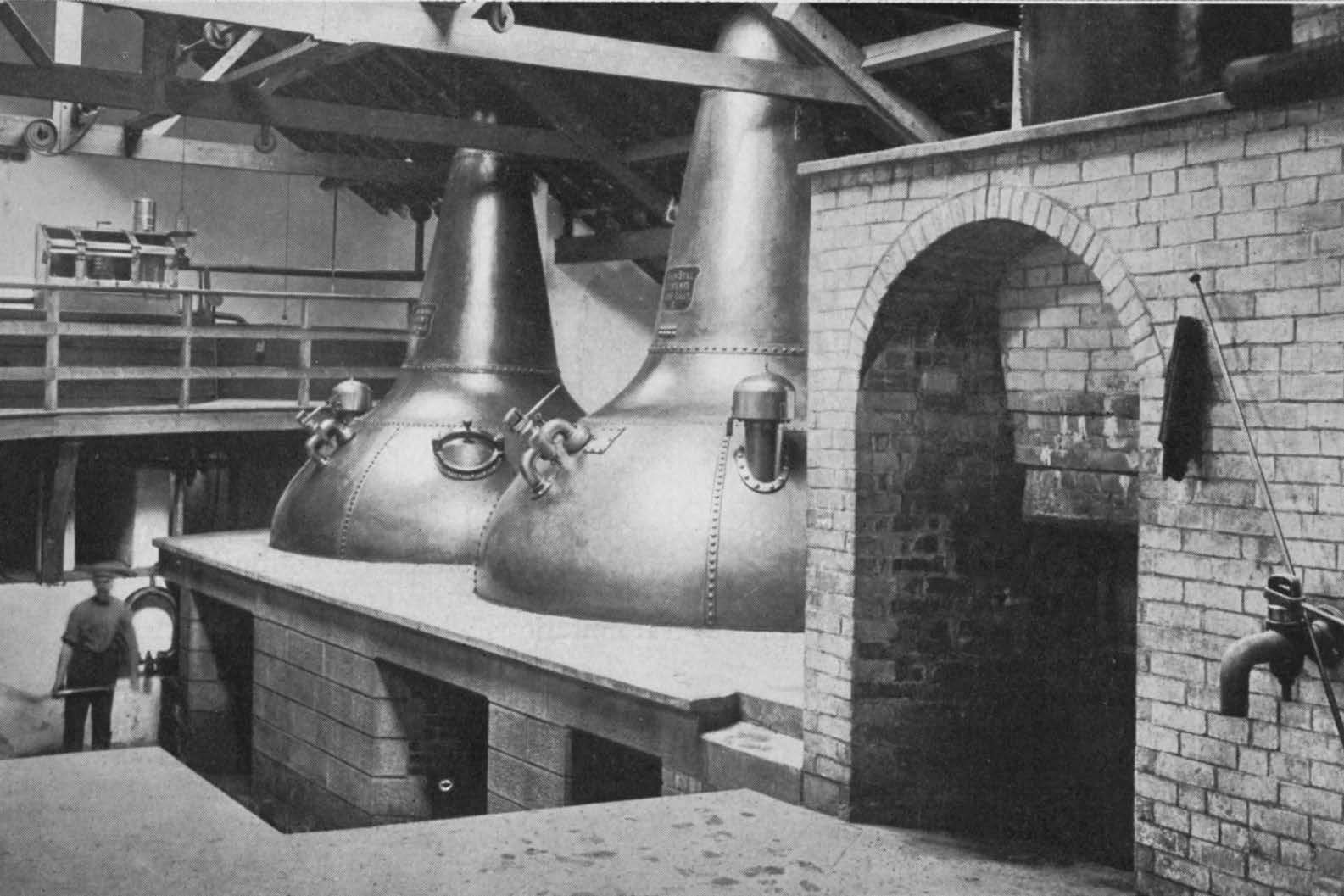LXXV
Glenburgie Distillery, Near Forres
March 14th, 1925
Glenburgie is one of the oldest distilleries at work in the Highlands of Scotland. It was founded in the year 1810 by the grandfather of Dr. Liston Paul, a surgeon, well known in London during the latter part of the nineteenth century.
The distillery lies in a wooded valley a few miles from Forres, and approaching the premises along a narrow winding road girt with shady trees, one is compelled to marvel at the beautiful natural surroundings in which Glenburgie Whisky is made. Of the earliest years in the history of Glenburgie Distillery little is known, but it may be interesting to recall that in 1835, when William Paul was proprietor, the establishment had a wash-still of less than ninety gallons’ capacity, and only sixteen bushels were mashed each week! Considerable progress was made by the next owner of Glenburgie, Charles Kay, who installed a wash-still of nearly seven hundred gallons’ content, and increased the output to a hundred and eighty bushels a week. Further developments can be traced to the proprietorship of Messrs. Fraser and Urquhart, who, in the year 1883, raised the capacity of the distillery to fourteen hundred bushels a week. Seven years later the establishment passed into the hands of Messrs. Alexander Fraser and Co., Ltd., the present proprietors, under whose management the original capacity of sixteen bushels has been multiplied exactly a hundred times!
A short distance from the distillery is Burgie House and the tower of old Burgie Castle nestling in the midst of a lovely pastoral landscape. The estate was once called “Burgie,” and the name appears in ancient documents relating to the See of Moray. In the year 1221 Alexander II granted “the lands of Burgin” to the neighbouring Abbey of Kinloss. Burgie Castle was built in 1602, and the date with armorial bearings can still be seen on the tower. Like the majority of the Morayshire castles, Burgie suffered from the destructive hands of the Marquis of Montrose and Lord Lewis Gordon during the Covenanting troubles from 1640 to 1646.
It is perhaps interesting to note that Glenburgie Distillery stands on the estate of the Cumyn family, prominent in the Scots history of the twelfth and thirteenth centuries. Branches of this family appear as Lords of Badenoch, Earls of Monteith, and Earls of Buchan, and at that point an enormous amount of property, including a chain of castles extending over the length of Scotland, was owned by the Cumyns. In the days of Alexander II and Alexander III, all lands adjoining the river Spey from Inverlochy to Fochabers belonged to the same family.
The locality is full of historical and antiquarian interest. Near Burgie Castle is an ancient monument known as the Blue Cairn, where stone coffins have been found, and in the vicinity also is a Druid Temple beside a lovely loch near the desolate scene of Macbeth’s legendary encounter with the three witches “so wither’d and so wild in their attire.”
Water for the distillery comes from springs near a gigantic rock on Burgie Hill. Supplies of Morayshire barley are carted to the premises, passed through a dressing machine, and steeped in two vessels of 36 quarters’ capacity. Peat from Dava Moor with a percentage of coke is used for drying the malt in a furnace fitted with King’s patent regulator. The kiln floor consists of the usual Hermann wire. An old-fashioned mill is employed for grinding the malt before it passes into large hoppers capable of holding four mashes at a time.
Sixteen hundred bushels are mashed weekly in a tun fitted with a sparge rod, and six backs are available for fermentation. The driving power for malting and mashing comprises a horizontal steam engine of ten horse-power.
In the still-house is a wash-still that can hold 4,000 gallons, and a Spirit-still of 3,300 gallons’ capacity. Storage accommodation in the warehouses is sufficient for 600,000 gallons of Whisky. Effluent is passed through filter beds, and distributed on arable land.
A building of extraordinary interest at Glenburgie is that comprising the original offices and warehouses. The quaint opening below the office doorway (as seen in the photograph) was the entrance to the vast warehouse maintained when the distillery had a capacity of sixteen bushels! It should be added that the roof of this curious little building was beautifully thatched until recently.
In conclusion, we may add that the distillery is carried on as a private company under three directors who have been associated with it since the company was formed.
Images © The British Library Board







